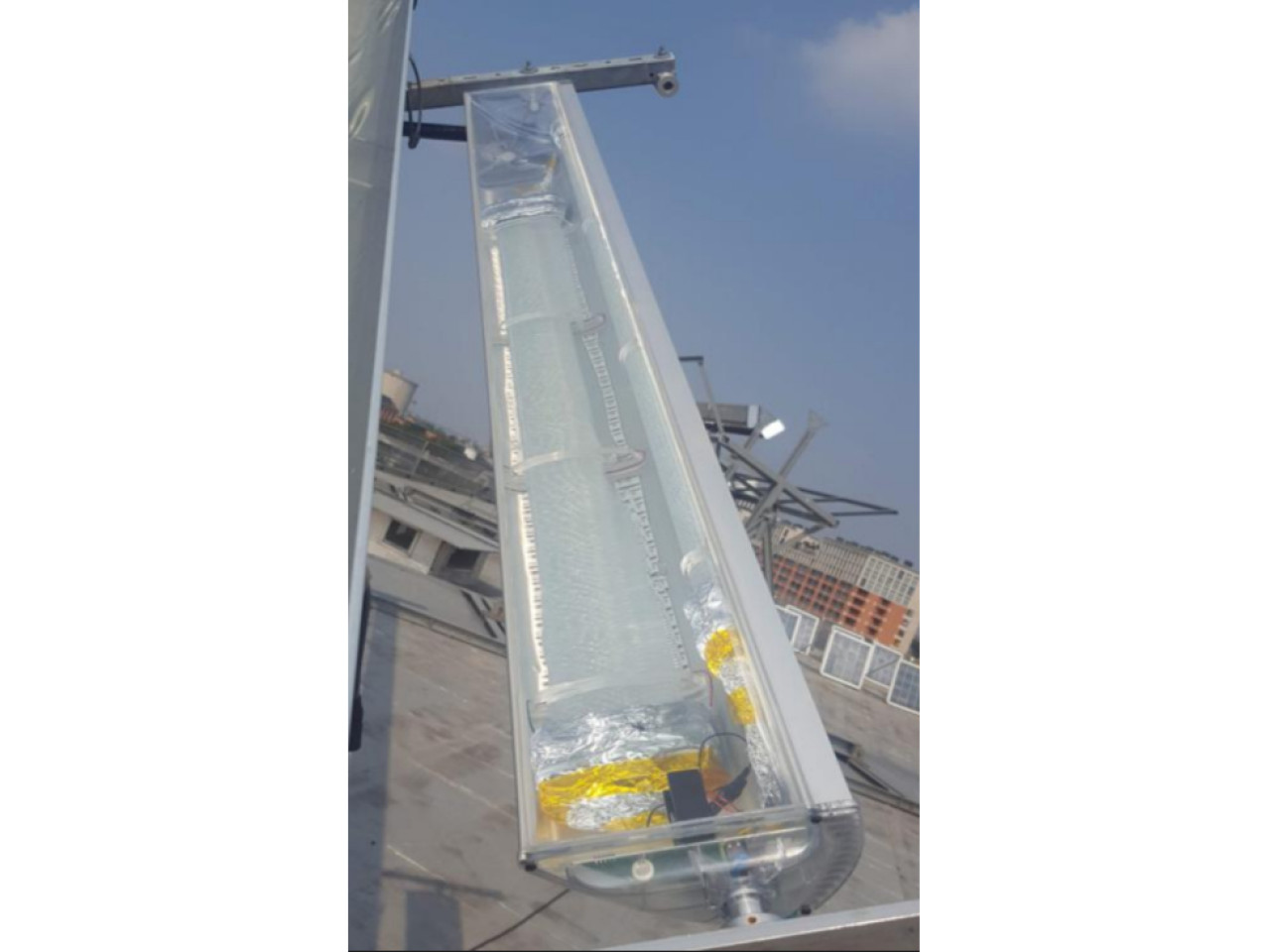The project has realized solar demonstrators that combine the decontamination of water containing organic substances to the conversion of solar energy into hydrogen. The production of hydrogen represents in this way an added value to the proposal of innovative solutions for environmental decontamination, of considerable interest for multiutilties operating in the field of waste and energy. The process is applicable both to the treatment of wastewater containing high concentrations of organic matter, quantifiable through COD (Chemical Oxygen Demand), and to tertiary decontamination, aimed at removing traces of emerging pollutants resistant to current potabilization methods.
 Devices designed and manufactured within the HP Solar project
Devices designed and manufactured within the HP Solar project
In urban waste water treatment plants, the economic weight of electricity consumption can be up to 30% of all operating costs, including labor, maintenance, chemicals, other supplies and sludge disposal. The proposed technology is able not only to reduce the concentration of emerging pollutants but also to reduce the formation of disinfection by-products compared to the current sanitization processes and with a substantial reduction in operating costs, since it is a technology that exploits solar energy.
As part of the project, solar demonstrators have been developed that decontaminate water from organic substances and simultaneously convert solar energy to hydrogen. Waste water purification was not only productive from an energy point of view, but also environmentally and economically sustainable. The production of hydrogen is an added value to the innovative solution of environmental decontamination: it represents an opportunity of interest for multiutilities operating in the fields of water service, waste and energy.
 Fully stand-alone modular photo-electrochemical cylindrical system consisting of devices equipped with tungsten photo-anode tungsten and silicon photovoltaic cells
Fully stand-alone modular photo-electrochemical cylindrical system consisting of devices equipped with tungsten photo-anode tungsten and silicon photovoltaic cells
Performance tests on urban and industrial wastewater
Laboratory scale demonstrators have been developed, both indoors and outdoors, based on the development of catalytic photo materials integrated into wired and stand alone solar devices. The device system has been tested on wastewater, water from urban and industrial wastewater treatment plants supplied by HERA S.p.A., an integrated water cycle manager. The anodized or colloidal tungsten trioxide (WO3) proved to be able to operate on real samples of urban and industrial wastewater, leading to a total organic load reduction of the order of 70% after approx. 1 hour of lighting. Under these conditions, the photocurrents generated by the device allow conversion yields of solar energy into hydrogen in the order of 2%. The same substrates based on tungsten oxide are able to remove emerging contaminants from drinking water. Moreover, the proposed systems are able to decrease the load of harmful microorganisms of different Gram Positive, Gram Negative and Candida Albicans fungus species, reaching up to the elimination of bacterial concentrations of the order of 5x10^10 units in a few hours. These results therefore allow us to propose a system able to reduce chemical and microbiological contamination by exploiting solar energy.
Terra&Acqua Tech; TekneHub; Hera S.p.A.; Italia Energia
Italian patent application "Modular Photovoltaic System" Patent Authors: Donato Vincenzi, Micol Boschetti, Luisa Pasti, Carlo Alberto Bignozzi, Stefano Caramori, Vito Cristino
 Concentrated solar device that integrates a photo-catalytic system made up of spheres covered in tungsten trioxide for photodegradation of pollutants
Concentrated solar device that integrates a photo-catalytic system made up of spheres covered in tungsten trioxide for photodegradation of pollutants

